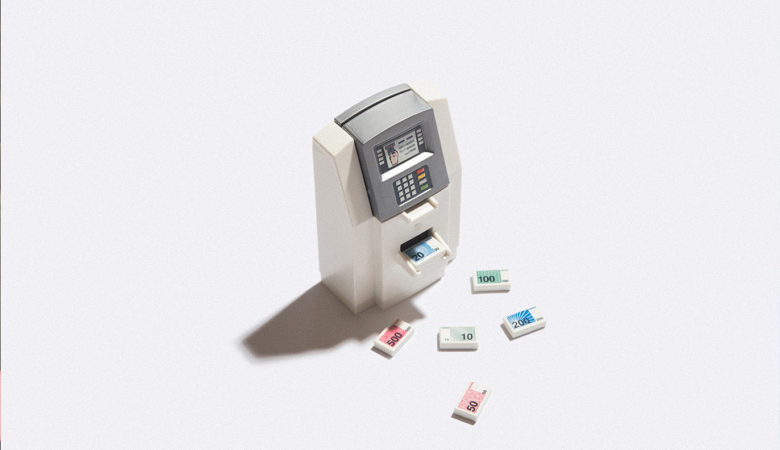Occasionally we’ll link out to relevant products that could be useful to our readers. Learn more about us here.
People often change jobs several times over the course of a career, which can be good for career advancement, but confusing for your company pension plan. If you’re under 50 or 55 – it depends on your province and your plan – and switch jobs, then you can leave your pension balance in your old employer’s plan where it can continue to grow, or you can transfer part or all of it into what’s called a locked-in retirement account (LIRA).
A LIRA is a registered account that’s exclusively for money that was once in a pension plan. Once you transfer your pension assets into the LIRA, the money can’t be touched until retirement – hence the “locked-in” part of its moniker. That means no further contributions and no withdrawals until you reach the minimum withdrawal age. The idea is to preserve your pension for its intended purpose, which is providing income in retirement.
Pension plans and LIRAs
Before getting into locked-in retirement accounts, it’s important to understand registered pension plans. Depending on where you live and your line of work, your pension plan is governed by provincial or federal legislation. When you leave your employer and transfer pension savings to a locked-in account, the same legislation that covered your original pension plan will apply.
LIRAs are available for provincially regulated pension plans in British Columbia, Alberta, Saskatchewan, Manitoba, Ontario, Quebec, Nova Scotia, New Brunswick and Newfoundland and Labrador. If you work in a federally regulated industry or have a pension in Nunavut, Yukon or Northwest Territories, it’s called a locked-in RRSP or locked-in retirement savings plan (LRSP). Prince Edward Island is the only province that doesn’t have its own pension legislation, and doesn’t use the federal legislation.
LIRAs and LRSPs/locked-in RRSPs are basically the same thing—they’re just governed by different laws and have different rules around minimum retirement age, transfers and early withdrawals. All the varying regulations can be confusing, so it’s important to understand what kind of legislation applies to your specific pension plan and LIRA.
Trade stocks commission-free and get a $10 cash bonus
Open a Wealthsimple Trade account to buy and sell thousands of stocks and ETFs commission-free. You’ll get a $10 cash bonus when you join.
Terms and conditions apply.
Understanding the LIRA
A LIRA is a type of registered account, which means it has special tax-sheltered status from the government. When you leave your employer’s pension plan and roll over money into a LIRA, it will continue to grow tax-free for as long as the funds stay in the account. When you retire and start tapping into your pension savings, your withdrawals are taxed as income.
Unlike pensions, which are managed by your employer and its chosen financial institution, you’re in control of your LIRA. You can open a LIRA at big banks, credit unions, caisse populaires, insurance companies and trust companies.
While you can’t make any deposits or withdrawals, your LIRA can continue to grow in value. LIRAs can hold different types of securities such as stocks, bonds, exchange traded funds (ETFs), index funds and mutual funds. You can manage your LIRA through a self-directed account, a robo-advisor or a financial advisor.
Once you reach the minimum retirement age, you have a few options. If you don’t need the money, you can keep your money parked in a LIRA. You can also convert it into an income-producing investment such as a life annuity or life income fund. If you do need the cash, you’ll have to convert your LIRA into an annuity or life income fund (LIF).
Converting your LIRA
Once you reach your plan’s minimum retirement age, what you do with your unlocked LIRA money is up to you. The best time to convert your LIRA depends on your age, individual needs and the amount of other personal savings you have. Remember, you have to convert your LIRA by age 71.
When it’s time to start withdrawing the money you diligently put away during your working years, you have two options: an annuity, or a life income fund (LIF). Before converting your LIRA into income, make sure to double-check unlocking rules and conversion options in your province or territory.
Annuity
An annuity is a type of insurance contract that guarantees regular fixed income payments for the rest of your life, or for a certain period of time. Annuities are mainly sold by insurance companies, and pay out a specified amount based on the type of annuity, your age, current interest rates and how much you have saved for retirement.
There are a few different types of annuities:
Single life annuity: Provides a guaranteed amount of fixed income payments for life. Buying a life annuity means you don’t have to worry about the uncertainty of market fluctuations, but it’s also less flexible—once you agree to the annuity’s fixed payment rate, it can’t be changed.
Joint life annuity: Pays guaranteed regular income for as long as you or your spouse or common-law partner lives. If you die first, your spouse will continue to receive annuity payments (usually a smaller amount).
Term-certain annuity: Provides guaranteed income payments for a fixed period of time (for example, five to 30 years).
Variable annuity: This annuity produces two streams of income, one fixed and one variable.
Part of your money is invested by your financial provider, and the variable income you receive depends on how the investments perform. The fixed income portion is guaranteed, but is usually a lower amount than what you would get from a term annuity.
LIRA vs. LIF
Another option is to convert your LIRA into a life income fund (LIF). Instead of a guaranteed payout, a LIF requires you to make between a minimum and maximum percentage of withdrawals each year, based on your age. Minimum and maximum withdrawal rates increase every year until you die or your savings run out.
For example, a 65-year-old who opens a LIF will need to withdraw a minimum of 4% of their fund balance that year, up to a maximum of 5.46%. If you have $800,000 in your retirement account, you’ll need to withdraw between $32,000 and $43,680 that year—and don’t forget, you’ll need to pay taxes on it, too. LIF withdrawal rates go up to age 100, where you’ll need to withdraw between 20% and 100% of your balance.
In Newfoundland and Labrador, you must convert your LIF to an annuity by the end of the year of you turn 80.
A LIF offers more flexibility than an annuity because there’s some wiggle room with how much you withdraw, but you still have to stick to those restrictions.
By law, you must close your LIRA by Dec. 31 of the year you turn 71 and convert it to an annuity or LIF.
Unlocking a LIRA
There are a few exceptional circumstances where you can unlock money from your LIRA early. Again, it depends on whether your locked-in account is governed by provincial or federal legislation, and the specific rules of your province. You’ll need to make a written request with supporting evidence to the financial institution that holds your LIRA.
A few reasons for unlocking your LIRA early include:
Shortened life expectancy: You have a serious illness or disability that has shortened your life expectancy to less than two years. You’ll need a doctor to verify this in writing.
Financial hardship: You’ve lost your job or your income has dropped significantly, you’re facing eviction or foreclosure, you have high medical or disability-related expenses, or you’re moving and need to pay first month’s rent and/or a security deposit.
Small plan balance: The balance of your LIRA is below a certain amount. What counts as “small” varies between federal and provincial plans. Federal plans, as well as some provinces, require you to be at least 55 years old to unlock small balances.
Non-residency: You’re no longer a resident of Canada, and have been a non-resident for at least two calendar years. You’ll need proof from the Canada Revenue Agency (CRA) that you qualify as a non-resident for tax purposes.
Special one-time unlocking: If you’re at least 55 years old, you may be able to unlock 50% of your LIRA and transfer funds into another tax-deferred savings plan, such as a registered retirement savings plan (RRSP) or registered retirement income fund (RRIF).
LIRA vs. RRSP
An RRSP is another type of tax-sheltered account used to save for retirement. The main difference between the two is LIRAs are used to hold money transferred from employment pensions, and RRSPs are accounts opened by individuals and funded by personal contributions.
Because employer-sponsored pension plans are increasingly rare, the RRSP is one of the most common types of accounts used by individuals to save for retirement. Pension money can be used to supplement personal RRSP savings and other universal retirement benefits, such as the Canada Pension Plan and Old Age Security.
When you deposit money into an RRSP, you can claim that amount as a deduction on your income taxes. Like LIRAs, RRSPs can hold a number of investments, and all contributions, interest and investment income grow tax-free inside the account.
Both LIRAs and RRSPs must be closed by Dec. 31 the year you turn 71. After this age, an RRSP must be converted to an income-producing RRIF. RRIFs are similar to LIFs: you have to withdraw a minimum percentage each year according to your age, and the minimum percentage increases as you get older. But unlike LIFs, RRIFs don’t have a maximum withdrawal limit. RRIF, LIF and annuity payments are all taxed as earned income.
Besides holding pension income vs. personal contributions, LIRAs and RRSPs have a few other key differences.
Contributions: Anyone who works and pays income taxes can open and contribute to an RRSP throughout their working life, up to age 71. RRSPs have maximum annual contribution limits: 18% of your earned income, up to a maximum of $27,230 (for 2020). LIRAs, on the other hand, don’t allow any further contributions after you make a one-time transfer from your former pension plan.
Withdrawals: RRSPs are meant to help people save for retirement, but you can technically make withdrawals at any time. You can withdraw as little or as much money as you want from your RRSP, and it will be taxed as earned income. After you transfer pension funds to a LIRA, you can’t touch the money until you reach the minimum retirement age specified in your plan.
In some cases, your employer may allow you to transfer your pension balance to an RRSP instead of a LIRA if your pension balance is less than 20% of the yearly maximum pensionable earnings (YMPE). YMPE is the maximum amount of earnings covered by the Canada Pension Plan. For 2020, the YMPE is $58,700.
Creditor protection: Like pension assets, money held in locked-in accounts is protected from creditors. RRSPs have less protection—if you file for bankruptcy, creditors can seize RRSP contributions you’ve made over the last 12 months.
When you turn 71: Both RRSPs and LIRAs must be closed the year you turn 71. If you have an RRSP, you can withdraw your savings as a lump sum, or buy an annuity. You can also convert your RRSP into an RRIF, which requires you to withdraw a minimum percentage of your balance every year based on your age.
If you’ve accrued savings through a company pension plan, a LIRA is a way to preserve and grow that money if you leave your employer before retirement. A LIRA is just one piece of the bigger retirement planning puzzle, and will need to be considered alongside other personal registered and non-registered savings. Because pensions and LIRA rules can be complicated, you might want to consult with a financial advisor or fee-only certified financial planner about your future plans, income needs, tax planning and estate planning.











